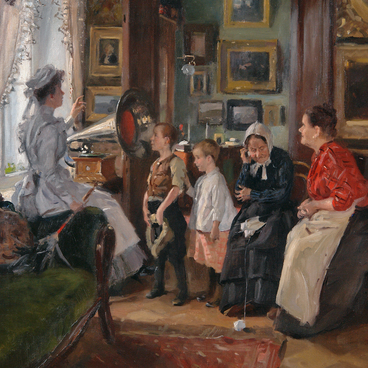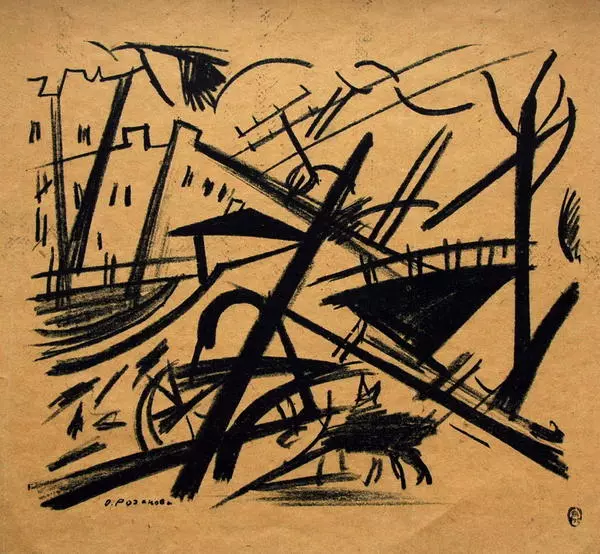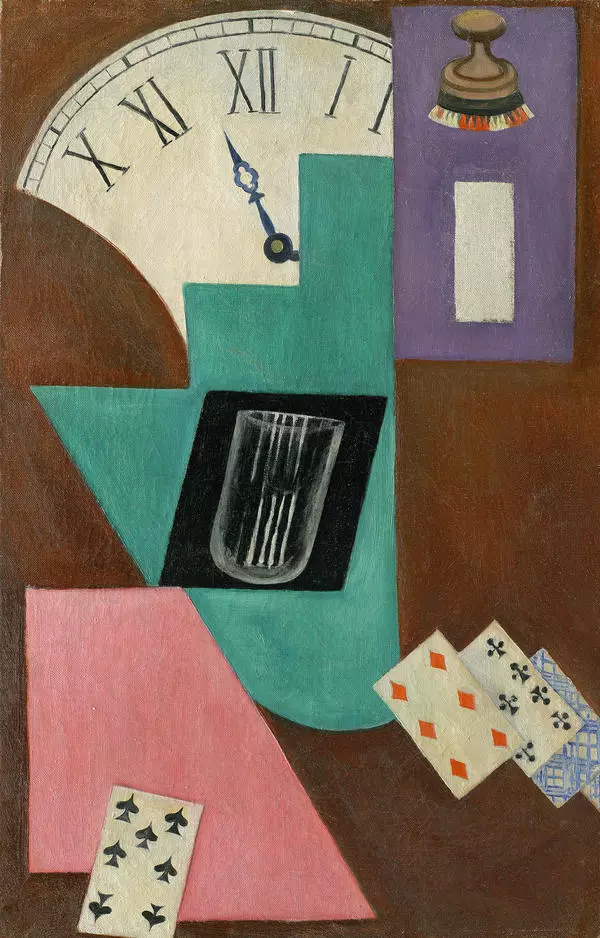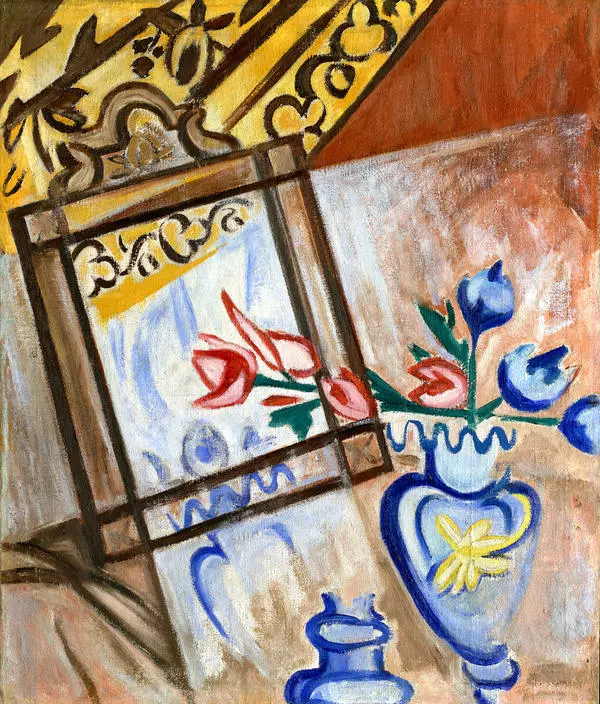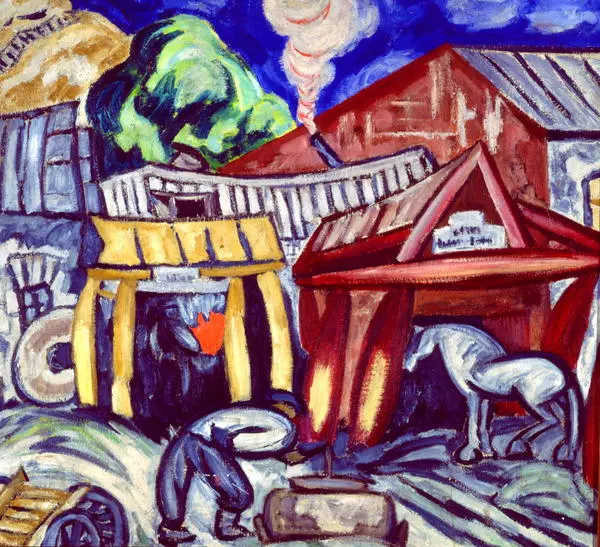Olga Rozanova is a painter, graphic artist, illustrator, poet, author of articles about art and a prominent Russian avant-garde artist. She attended to the classes in Konstantin Yuon private school-studio in Petrograd Higher Art and Technical Institute and later studied art in the school of Elizaveta Zvantseva under the tutorship of Mstislav Dobuzhinsky and Kuzma Petrova-Vodkin.
In 1910, Rozanova moved to Saint-Petersburg and jointed the Union of Youth art society. Her meetings with Vladimir Mayakovski, Vladimir Tatlin, Pavel Filonov and Kazimierz Malevich had a great influence on her future art life. In 1912, she made acquaintance with poet-futurists Alexey Kruchenykh and Velimir Khlebnikov, and illustrated their books.
Olga Rozanova, along with the artist Natalia Goncharova, became one of the few supporters of futurism in Russia. In 1914, at the invitation of the Italian writer and futurism founding father Filippo Marinetti, Rozanova took part in the Roman International Free Futuristic Exhibition. In 1916, she joined Supremus society chaired and led by Kazimir Malevich. After the revolution of 1917, she was engaged in the reorganization the art and acted as a supervisor of the art/industry subdivision of the People’s Commissariat of Education, Graphic Media Desk.
Later on Olga Rozanova came to the conclusion that a painter could do without objects and made color her prime tool for conveying message and mood of her paintings. In Still Life the artist created a composition where the perspectives were intermixed and the traditional forms abused. Rozanova ruined the stability of the objects worlds and challenged the painting, graphic, composition clichés.
Focus of an object’s meaning became a corner stone of Rozanova’s painting doctrine, including composition solutions and unorthodox use of forms. The artist accented such meaning by a distinct outline that altered the audience’s perception of the world.
In 1910, Rozanova moved to Saint-Petersburg and jointed the Union of Youth art society. Her meetings with Vladimir Mayakovski, Vladimir Tatlin, Pavel Filonov and Kazimierz Malevich had a great influence on her future art life. In 1912, she made acquaintance with poet-futurists Alexey Kruchenykh and Velimir Khlebnikov, and illustrated their books.
Olga Rozanova made her paintings using several trends of the avant-garde — a new art trend, where each painting was viewed as a political statement and a revibration of the scientific/technical progress achievements. The artist started with primitivism, futurism, went through suprematism and then created her own style she called color painting.
Still Life was painted circa 1914-1915 in preparation to the The Last Futurist Exhibition of Paintings “0.10” that was opened in December 1915. Kamizir Malevich unveiled his Black Square at that exhibition for the first time. Olga Rozanova displayed 11 works all demonstrating her quest for new forms and rejection of the traditional art.
Later on Olga Rozanova came to the conclusion that a painter could do without objects and made color her prime tool for conveying message and mood of her paintings. In Still Life the artist created a composition where the perspectives were intermixed and the traditional forms abused. Rozanova ruined the stability of the objects worlds and challenged the painting, graphic, composition clichés.
Focus of an object’s meaning became a corner stone of Rozanova’s painting doctrine, including composition solutions and unorthodox use of forms. The artist accented such meaning by a distinct outline that altered the audience’s perception of the world.


